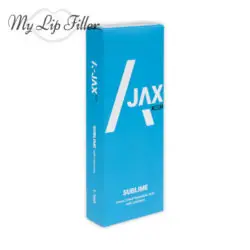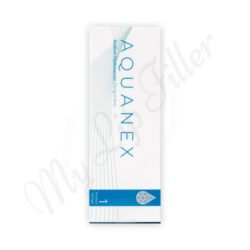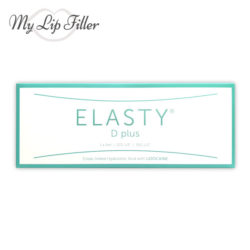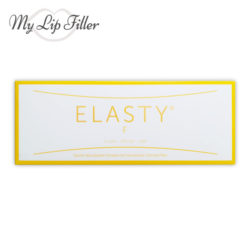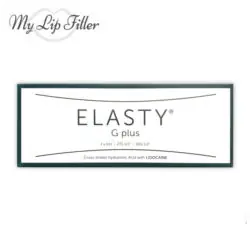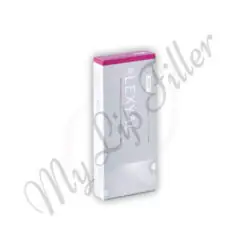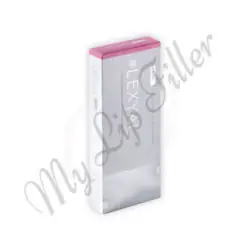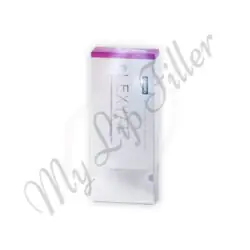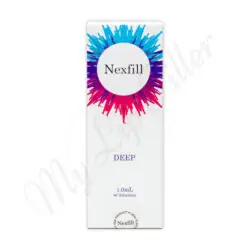Hyaluronic acid is, hands down, the darling of the beauty industry. These days it can be found in almost any type of product – skin cream, hair products, skin tonics, mesotherapy solutions, dermal fillers. It has even found its way into food supplements and many other non-beauty-related products. But when it comes specifically to fillers Hyaluronic acid truly reigns supreme.
Many people only associate facial fillers with HA-based products, which gained immense popularity in the last 15 years. But fillers, as a product a hardly a new solution. Skin fillers have been used (primarily in plastic surgery) for decades, and to this day many other products are based on various substances such as Poly-L-Lactic acid, Polynucleotides, Calcium, Polycaprolactone, and many others, which exist side by side with acid-based injectables. Still, when most people hear about fillers they immediately make the connection with HA-based gel for wrinkle removal and facial enhancement. But why?
It’s good to begin by explaining what facial filers are. Regardless of the compound that is at the heart of each solution, fillers are injectables, which are generally utilized as a method of removal of shallow to very deep wrinkles, filling skin folds, and providing a lifting effect and other dermal-related procedures involving restoring or adding skin volume in a particular area of the face. Currently, when it comes to the base substance for creating the gel of the filler Hyaluronic acid is the first choice for most types of procedures. Gel based on HA is easier to use and provides dermatologists and licensed cosmeticians with flexibility which more traditional methods usually do not.
Hyaluronic Acid Dermal Filler
HA fillers help to avoid some of the main drawbacks of “older” filler solutions – invasiveness and (in) the ability to reverse the effect. Back in the 80s and 90s, the filling methods that were used were squarely in the field of plastic surgery. This meant difficult, expensive, and unpleasant procedures, with sometimes unpredictable results which were often irreversible. In other words, if you got a lip enhancement procedure, you were more or less stuck with the results.
Hyaluronic fillers changed all of this dramatically. For the first time with dermal fillers Hyaluronic acid allowed to result to be non-permanent. This simple gel is naturally dissolved by the body over time. What is even better, there are solutions based on the Hyaluronidase enzyme, which can boost the dissolving process immensely, and dermal filler removal is very quick and convenient. Even today, most other injectables based on different ingredients will not have such a quick fix. You essentially have to wait out PLLA or PLC fillers to dissolve on their own in the body.
Advantages of the HA-based fillers
Thus is is easy to conclude that fillers that are based on Hyaluronic acid are better than other dermal solutions in this class of product, like:
- Flexibility of usage
- Non-permanent effect
- Easily reversible results
- Much lower costs than traditional methods
- Non-invasive and requires no downtime
In addition, because they are based on this acid Hyaluronic filler products have an overall skin-revitalizing effect, apart from their volumizing main purpose. Hyaluronic acid is natural to the human skin and our dermis depends on it for its effective hydration. Face fillers based on HA will release the acid molecules into the dermal layer they are applied to and help improve its capability to retain vital moisture.
Hyaluronic Acid Fillers
A major point in favor of HA fillers is the fact that they cover almost the entire spectrum of facial procedures. Other compounds do not allow such flexibility of purpose for facial treatment, however Hyaluronic acid dermal fillers exist in many forms – soft fillers for superficial wrinkle treatment; moderately thick gel for the correction of mid to deep skin depressions; thick contouring and severe skin fold fillers; very dense solutions for body contouring (breasts and buttocks); skin booster products with minimal filling effect, which, however, greatly boost the long term condition of the skin.

Expert Tips on Hyaluronic Acid Fillers
Hyaluronic acid (HA) fillers are a cornerstone in the realm of aesthetic treatments, renowned for their natural compatibility with the human body and versatility in addressing a range of cosmetic concerns. As a cosmetologist, my advice to those considering HA fillers is to appreciate the unique benefits they offer, including their ability to hydrate, volumize, and stimulate collagen production within the skin. This makes them an excellent choice for smoothing out wrinkles, enhancing facial contours, and improving skin texture.
When opting for HA fillers, it’s crucial to seek a consultation with a skilled practitioner who can tailor the treatment to your specific needs. Discuss your aesthetic goals, and be open to recommendations on the most appropriate type and volume of filler to achieve the desired outcome. The beauty of HA fillers lies in their reversibility; an enzyme called hyaluronidase can dissolve the filler if the results are not as expected, providing an extra layer of safety and peace of mind.
Furthermore, consider the longevity of HA fillers, which typically range from 6 to 18 months, depending on the product used and the area treated. Your dermatologist / cosmetologist can advise on a maintenance plan to keep your results looking fresh and natural.
Lastly, follow your practitioner’s guidance on post-treatment care to maximize the benefits of your HA filler treatment. This may include avoiding excessive sun exposure, staying hydrated, and following a skincare routine that supports skin health and enhances the longevity of the filler.
Remember, the goal of HA fillers is to enhance your natural beauty by providing subtle, yet impactful improvements. By choosing a reputable practitioner and following their advice, you can achieve beautiful, long-lasting results with HA fillers.
Showing 1–12 of 130 results
-

A-Jax Keen Cozy (1 x 1.1ml)
$41.00 Add to cart -

A-Jax Keen Sublime (1 x 1.1ml)
$41.00 Add to cart -

A-Jax Keen Vivid (1 x 1.1ml)
$41.00 Add to cart -

Aquanex HA Skinbooster (1 x 2.5ml)
$29.00 Add to cart -
Sale!

Elasty D Plus Double Filler (2 x 1ml)
Original price was: $79.00.$75.05Current price is: $75.05. Add to cart -
Sale!

Elasty F Double Filler (2 x 1ml)
Original price was: $79.00.$75.05Current price is: $75.05. Add to cart -
Sale!

Elasty G Plus Double Filler (2 x 1ml)
Original price was: $79.00.$75.05Current price is: $75.05. Add to cart -

Lexyal Deep (1 x 1ml)
$52.00 Add to cart -

Lexyal Fine (1 x 1ml)
$52.00 Add to cart -

Lexyal Grand (1 x 1ml)
$52.00 Add to cart -

Neauvia Intense Flux 1 x 1ml
$96.00 Add to cart -

Nexfill Deep (1 x 1ml)
$44.00 Add to cart


